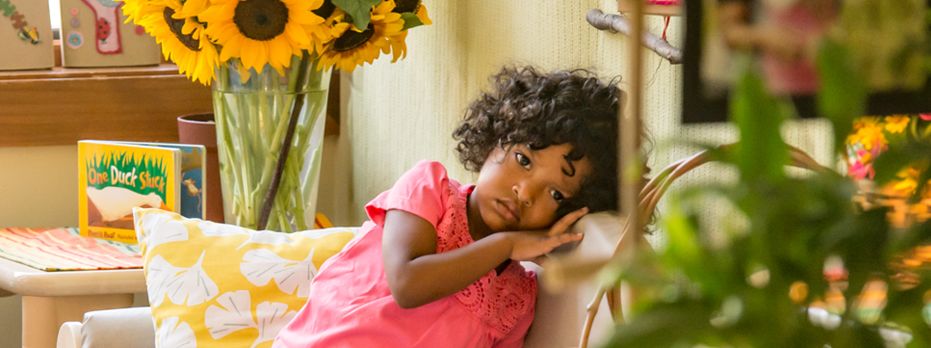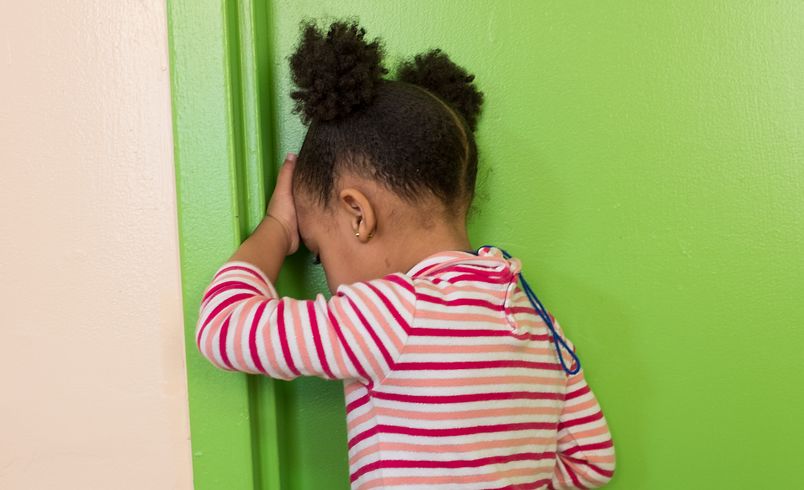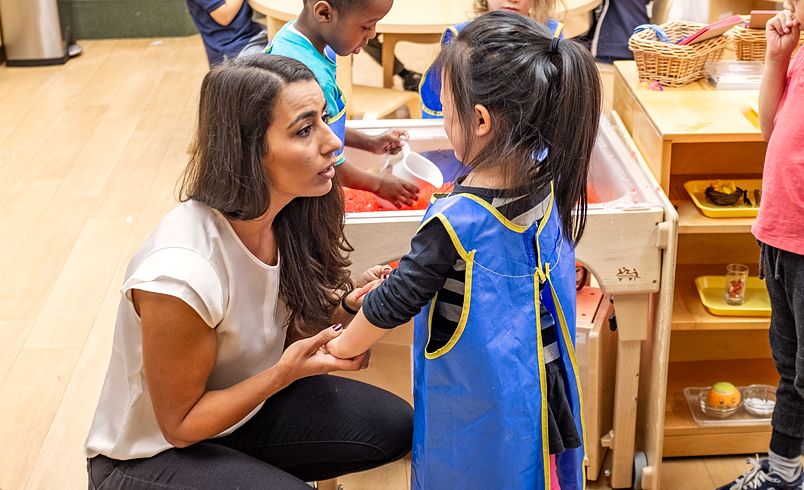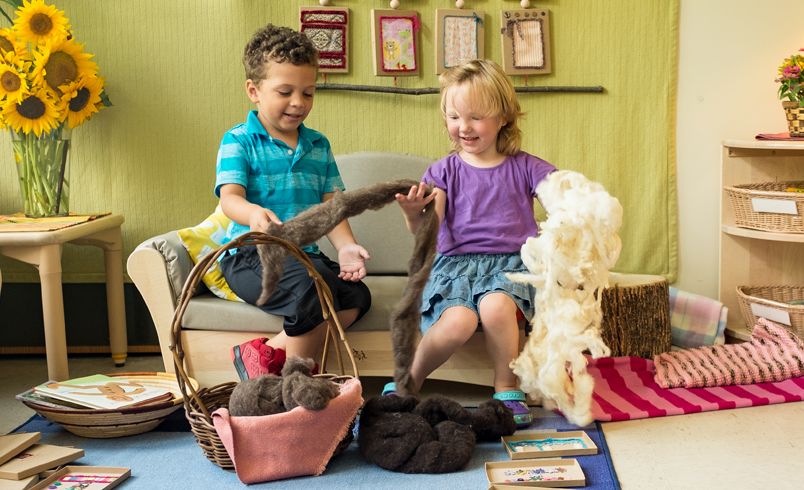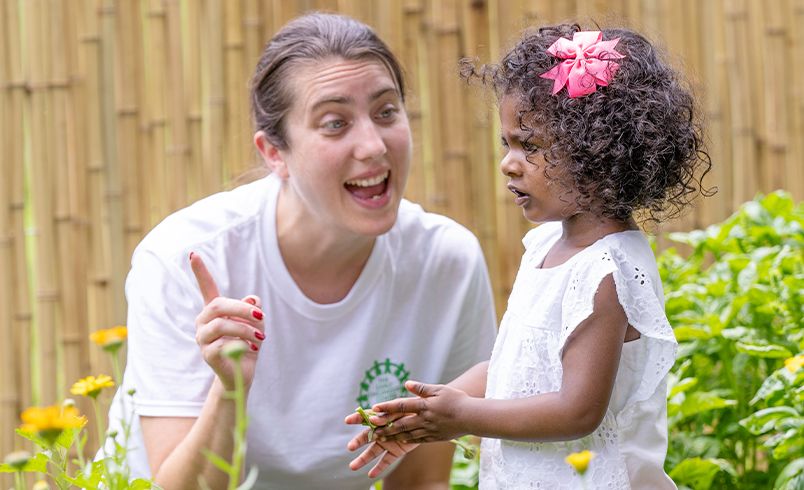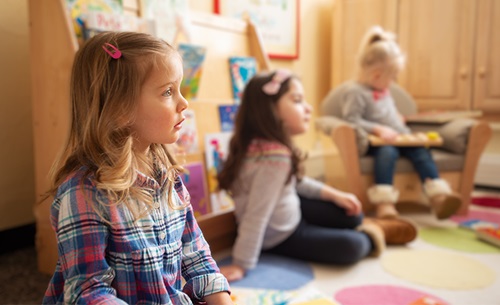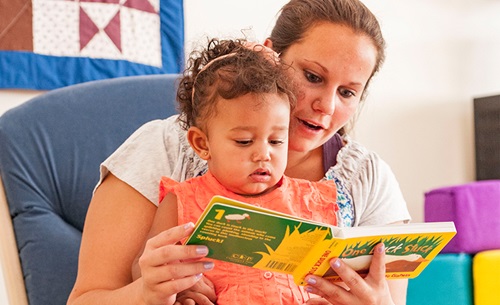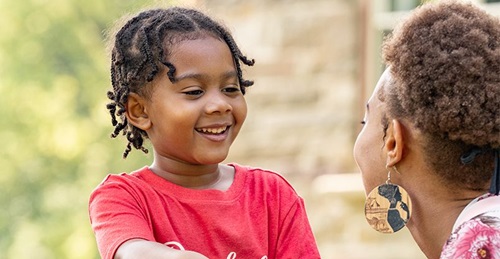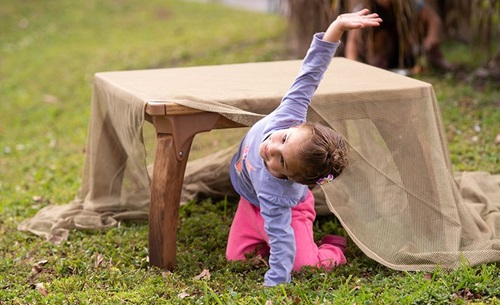Regulation as the Foundation for Learning
| February 2022“If you finish putting away your art supplies then you can [take a break, use the bathroom, play outside, come sit with me, go use the sensory nook].” It can be easy to find ourselves making statements like this to children, especially in moments when we want them to do something. “First, do what I ask; then, you can get regulated.” Yet we should be saying the opposite. “[Go take a break, use the bathroom, play outside, come sit with me, or use the sensory nook], then come back and finish putting away your art supplies.” Regulation should be made the priority when children are struggling; it should not be made the reward. Yes, I know what you’re thinking: “Aren’t we rewarding the child by letting her ‘escape’ from something challenging?” The answer, as supported through research, is “NO! We are helping her nervous system to regulate in the face of something challenging so she can better approach the challenge the next time around.”
Why, then, is regulation so important to learning? The brain is organized in a hierarchical manner, whereby, essentially, the needs of the lower brain must be met before the higher levels of the brain can be engaged. Regulation via the limbic system occurs in the lower levels of the hierarchy, and is driven by the need to feel safe. If the limbic system is sending out signals of threat or fear then all the resources of the brain go towards addressing that basic survival need—not towards answering a math question or listening to a lesson plan or standing still in line (all of which happen in higher cognitive areas of the brain). And here the word “safety” does not just mean an environment that is free from perceived threat or harm, it is the felt sense within the brain and body guided by connections to the nervous system. This environment is created through both internal and external messages of safety rooted in relationships.
That leaves us with exploring the concept of co-regulation in order to establish that sense of relational safety. In our books we define co-regulation as, “attuned and responsive interactions between the child and adult that allow them to reach a state of regulation together”. Co-regulation with a trusted, safe adult is a precursor to self-regulation. Oftentimes we make the mistake of saying, “go over there and calm down then come back and I will help you figure out this problem.” This approach assumes that self-regulation should come before co-regulation. Rather, the student needs to know that despite feeling dysregulated there will be someone present who will guide him back to a place of regulation so that he can access the higher cognitive areas of the brain required to solve a problem, demonstrate impulse control, retrieve language skills, or organize his thoughts. This might mean using safe, approachable nonverbal cues; engaging in attuned listening; describing briefly what you or the student might be seeing, thinking, or feeling; sitting quietly near the student in order to be present; modeling deep breathing and body relaxation; or allowing the student to utilize calming sensory inputs with you nearby.
When considering co-regulation with students, first take notice of your own regulation. The calm presence of an adult can do wonders for co-regulating; you are both achieving a regulated state together. It’s important to recognize that a student’s state of regulation will impact their behaviors, and their behaviors will impact your state of regulation and subsequent behaviors. We call this the teacher-student response cycle. This cycle can be negative or positive. A student might get upset when sharing with another peer secondary to poor sleep the night before [state of regulation] and then yells out in irritation while throwing the toy across the room [behavior]. The teacher could then approach the student in a frustrated frenzy [state of regulation] with hands on her hips and a stern voice saying, “You need to go pick up that toy. And do not throw something in this classroom again” [behavior]. This could then throw the student into an even more dysregulated state, causing him to yell back at the teacher “No way!” and refuse to re-engage with the peer. A negative teacher-student response cycle transpired.
Yet, if the teacher took a minute to take several deep breaths and pause before approaching the student [state of regulation] she might instead approach the student in a relaxed posture, get on his level, and make a descriptive observation: “I know sharing can be really hard sometimes. Let’s take a deep breath and work through it together” [behavior]. Note that sometimes asking questions, such as “What’s wrong?” or “How can I help?”, can be even more dysregulating when we are feeling stressed because it places another demand on the child to respond (language is a higher level cognitive skill in the brain. The student may then yell back at the teacher “I just can’t do this!” (as a means to continue expressing his frustration), allowing the teacher room to comfort the student and give the student space to recover before picking up the toy and allowing the peer to use it (even if briefly!). The teacher has engaged in a positive teacher-student response cycle. Before this can happen, the teacher must be aware of her state of regulation and equipped with strategies to maintain a regulated state in order to effectively engage the student in co-regulation. Some things that may be helpful for the teacher to maintain a regulated state include: taking note of the sensory environment (is it too loud, too bright), stopping to take deep breaths (make sure the exhale is longer than the inhale), eating a snack, pausing to do a brief meditation or prayer, engaging in some quick stretches, or using humor.
Sensory input can also be a huge source of regulation, particularly in children, again, setting the stage for higher cognitive engagement. Sensory information provides a sense of safety in our bodies and in our environment; it helps establish predictability. This is true in the learning environment as well. You have the power to set and manipulate the sensory environment in the classroom in order to foster regulation. For example, research suggests that fluorescent lights can be overstimulating to some students; introducing natural light into the classroom can be more regulating. At the end of the day when students are tired, you might consider integrating more movement activities that stimulate the vestibular system in order to “wake up” their brains and bodies for improved engagement. Flexible seating has also gained popularity, for good reason, because it allows students to access regulating sensory systems (proprioceptive and vestibular) that promotes access to higher cognitive areas of the brain. We all need different amounts and types of sensory stimulation throughout the day, so what works for one student may not necessarily work for another.
Unfortunately, children are losing opportunities to explore their sensory worlds in a way that promotes regulation and, thus, engagement in learning. With the introduction of the iPad in 2010, children are spending more and more time on devices that are more and more accessible. Schools have also employed heavy use of technology for lesson plans and homework. While screen time altogether is not “bad”, it does tend to overstimulate the visual and auditory systems while at the same time deprive the brain of stimulation from the tactile, vestibular, and proprioceptive systems. These “big three” sensory systems tend to be the ones that facilitate the most regulation in the brain and body, allowing us to be in a calm, alert state necessary for participation in activities. Screen time also tends to replace time otherwise spent playing outside, engaging in imaginary or creative play, interacting with friends, and manipulating toys/objects—all of which are essential for building positive sensory health for a more integrated, regulated brain. Structured activities—sports, music classes, theater—have also gained popularity over the years, replacing unstructured play time needed for the brain to flex its “regulation muscles”. Again, these activities in and of themselves are not a negative thing; it’s just important to note that children also need plenty of unstructured play time (especially outside!).
On the flip side, sensory input can be a source of dysregulation in students (and adults). We all have our own sensory profiles comprised of sensory inputs that may be more regulating to us (vestibular and gustatory, for me) and those that may be more dysregulating (auditory, for me). Children and adults alike tend to lean into the sensory inputs that are more regulating and minimize (or avoid) sensory inputs that are more dysregulating. You might notice in yourself some sensory inputs that might be more dysregulating and thus interfere with your ability to co-regulate with a student in a particular moment. Maybe tactile input tends to irritate you, and after a morning of students sitting near you on the floor or tapping on your arm or bumping into you, you notice your fuse is shorter than normal. Or maybe smells (olfactory input) can become overwhelming and trying to co-regulate with a sweaty student who just returned from playing out on the playground is quite challenging. In those moments, it’s important to tap into your self-awareness, employ self-regulation strategies, and pause for a moment before co-regulating with the student.
For those with sensory processing disorder (SPD), the brain does not process and/or utilize sensory input in a way that is functional, meaning that it negatively impacts the way a person engages with her body, environment, or others. As a result, people with SPD oftentimes experience more frequent dysregulation particularly when they cannot meet the demands or expectations presented to them.
Bear in mind there is no time limit to getting back to a regulated state. We cannot expect a student to “get regulated” in 3 minutes simply because we set a timer. The more a student engages in co-regulation, the more the nervous system will rewire in order to hasten the process of becoming regulated. And, the more the student will learn to self-regulate on her own. “But what about all the time a student is “losing out” on?”, you ask. If a student is “losing out” on 20 minutes of instruction time because they are learning about how to regulate their nervous system, this is much more valuable in the long-run than being dysregulated for those 20 minutes while seemingly “participating” in the lesson or activity. This will ultimately allow the student to rise to the increased demands as they progress through school because they can better access those higher level cognitive areas of the brain required for working memory, problem solving, critical thinking, integration of information, application, comprehension, etc. Let’s continue to shift the focus from sticker charts, clip charts, time outs, and other behavioral techniques to co-regulation, sensory strategies, and other regulatory techniques that lay a necessary foundation for learning.
- pay attention to your own regulation
- minimize your own language
- avoid asking questions to the child
- describe what the student might be feeling or thinking
- use ‘thumbs up’ and ‘thumbs down’ for making choices
- wait to understand “what’s happening” until afterwards
- use calming, regulating sensory inputs
- sit with each other
- offer a snack or bathroom break
- stand up, stretch, or walk around
- reflect on the scenario after regulation occurs
- use humor
- focus on the positives, like the effort the student has exerted
|
Strategies for Co-Regulation |

